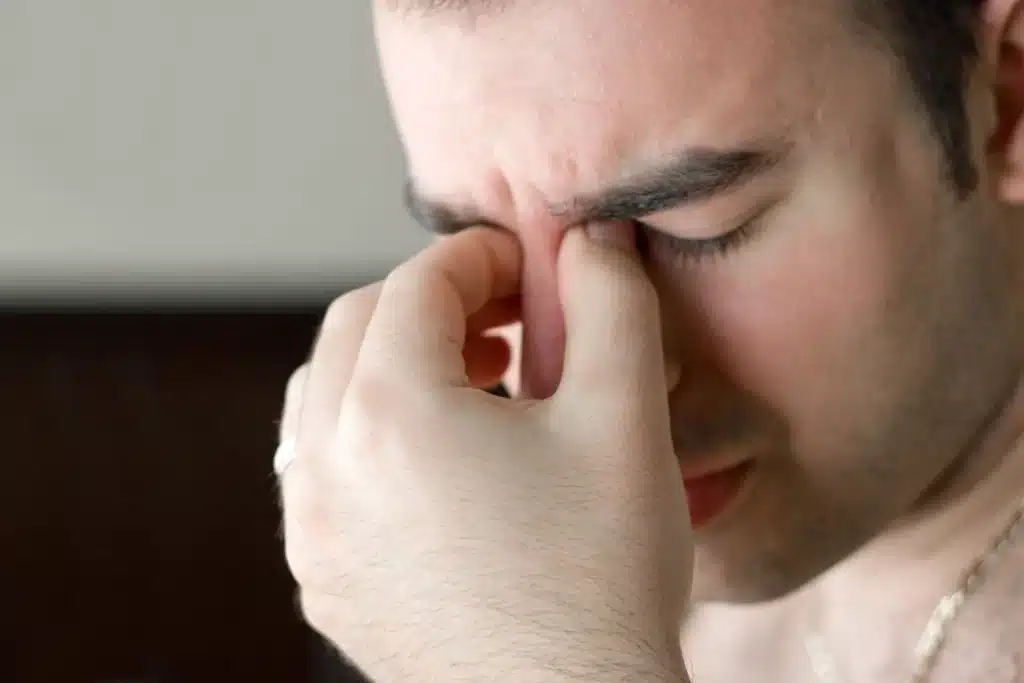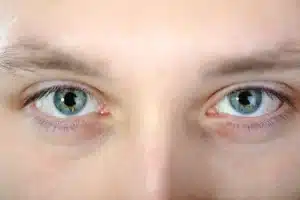How to Fix Dry Eyes From Contacts
According to the CDC, more than 45 million people in the United States wear contacts regularly – which makes up approximately 14% of the population. They not only prevent you from needing reading glasses, but help you avoid having major surgery to improve your vision – the best of both worlds.
Contacts improve an individual’s quality of life in a variety of ways, but that doesn’t mean wearing contact lenses comes without its fair share of side effects – one of which being dry eyes from a lack of oxygen to the eyes. Other common side effects include red eye, eye infection, eye ulcers, conjunctivitis, and more.
At Milwaukee Eye Surgeons, one of the most common concerns we get asked by contact lens wearers is what they can do to relieve their dry eyes from contacts. Don’t worry, we’ll answer some of your questions down below – including why contacts cause dry eyes and, better yet, how to fix dry eyes from contacts.
What is Dry Eyes?
Dry eye syndrome, also known as dry eye disease, occurs when tears aren’t lubricating and protecting your eyes properly. Tears are produced in the lacrimal glands and are made up of a mixture of water, mucus, lipids (oil). Together, these components help moisten, clean, smoothen, and protect the eye.
There are three primary reasons why people experience dry eyes:
- Decreased Tear Production – when the eyes aren’t producing enough natural tears, they will become dry (if not treated properly).
- Poor Tear Quality – when the eyes produce poor quality tears, they won’t function properly and will result in dry eyes.
- Increase Tear Evaporation – when tears evaporate too quickly, they won’t be present long enough to function properly, which may cause dry eyes.
Certain medications and conditions can cause dry eyes as well. Some of the most common dry eye symptoms include stinging, burning, redness, and itching of the eye, abnormal discharge in the eye, blurred vision, watery eyes, eye strain, light sensitivity and more. If not treated properly, it will grow worse.
Can Contact Lenses Cause Dry Eyes?
When patients wear a contact lens, it gets placed on top of their cornea – the front surface of the eye. The cornea helps focus light so we can see clearly, but it’s the only part of the human body that doesn’t have a blood supply. With that being said, the cornea receives 100% of its oxygen directly from the air outside.
Since contact lenses sit on top of the cornea and tear film, normal oxygen flow to the cornea (and rest of the eye) becomes obstructed – which can cause a number of eye complications, such as dry eyes. Without a steady amount of oxygen, the eyes struggle to produce natural tears and will eventually become dry — known as contact lens-related dry eyes.
Some of the other primary reasons why contact lens wearers often experience dry eyes include excessive use of contacts (wearing them for too long), improper use or care of contact lenses, wearing the wrong contact prescription, wearing contacts that don’t fit, and much more. Don’t worry, treatments are available.
How to Fix Dry Eyes From Contacts
Fixing dry eyes from contacts often requires the use of eye drops – much like any other form of dry eye disease. Many people can benefit from over-the-counter eye drops, also known as artificial tears, but you should contact your eye doctor if they aren’t working or aren’t providing the type of relief you expected.
While eye drops can be used both temporarily and long-term to help treat dry eyes from contacts, there are a number of other factors that contribute to the treatment of dry eyes from contacts – including the type of contact lens used, the type of contact solution, caring for your contacts, and lifestyle choices.
1. Punctal Plugs
A punctal plug is a tiny device designed to fit into the tear ducts — also known as the puncta. The device helps prevent tears from being drained and allows for the surface of the eye to stay moist and comfortable.
2. LipiFlow
One of the leading causes of dry eye disease is meibomian gland dysfunction (MGD), which can be treated with LipiFlow. The procedure is designed to warm and massage the inside of your eyelid to promote oil production and improve the overall quality of your tears.
3. BlephEx
Blepharitis is an eye condition that’s characterized by inflammation along the edges of your eyelid — the eyes might become red, itchy, swollen, and/or irritated. BlephEx is a procedure that cleans and removes debris from the eyelids, eliminating any bacteria that grows there. This helps alleviate common dry eye symptoms.
4. Photofacials
Photofacials, also known as intense pulsed light (IPL) treatment, uses light to liquefy and remove hardened oils that clog the meibomian glands — the part of the eye that makes oil for tears. IPL also helps to treat vascularization and reduces inflammation in or around the eye.
5. Type of Contact Lens
Doctors might recommend you change the type of contact lens you wear. For example, there are several types of innovative contact lens material and types designed to allow for better oxygen flow – such as silicone hydrogel contact lenses, scleral lenses and low-water content contacts. Daily disposable contact lenses and orthokeratology lenses help limit overuse.
6. Type of Contact Solution
Contact solution is used to clean, disinfect, and store contact lenses when not being used. If it’s not the type of contact lens causing the dry eyes, it might be the contact solution – some of them contain substances and chemicals that can irritate the eye. Your doctor can help you find a better alternative.
7. Caring For Your Contacts Properly
Recent estimates suggest that up to 90% of contact lens wearers aren’t adhering to the proper care and cleaning of contact lenses – which could be contributing to dry eyes. Make sure you’re disposing of them properly, removing them when you’re sick, and changing them frequently to prevent germ buildup.
8. Lifestyle Choices and Habits
In addition to the above treatments, contact lenses should also eat a healthier, well-balanced diet and maintain a healthy weight to avoid dry eyes from contacts. Some vitamins and supplements – such as lutein, zeaxanthin, Vitamin A, Vitamin C, and Omega-3 – can also help ensure proper eye health.
What is the Best Eye Drops for Dry Eyes?
Eye drops, or artificial tears, are often the go-to solution for dry eyes, but that doesn’t mean all eye drops are created equal. For example, there are several types of eye drops that should be avoided by contact lens wearers – like thick eye drops, vasoconstrictor eye drops (redness relief), and medicated eye drops.
With that said, the best eye drops for dry eyes are either rewetting eye drops, which are designed specifically for use with traditional contact lenses, and preservative-free eye drops, which prevent unwanted chemicals and preservatives from seeping into the contacts. At the end of the day, follow the advice of your doctor.
Contact Milwaukee Eye Surgeons Today!
Are you trying to figure out why your eyes get dry when you wear contact lenses? Do you dream of a life free of dry eyes from contacts? Do you wish to learn what helps with dry eyes so you can finally find the relief you deserve? If you answered ‘yes’ to any of those questions, don’t hesitate to contact us today!
At Milwaukee Eye Surgeons, we take pride in getting to the bottom of any eye condition or complication. We understand how important eye health is to an individual’s overall quality of life – so if dry eyes are making it difficult to enjoy your life, then we’re here to help. Contact us at (414) 377-5550 to schedule your first appointment!





